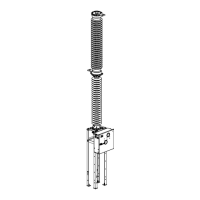Equipment end of life
Management of SF
6
gas
P80--0002EN/02
1/6
01--2011
© ALSTOM 2010. All rights reserved. Information contained in this document is indicative only. No representation or warranty is given or should be
relied on that it is complete or correct or will apply to any particular project. This will depend on the technical and commercial circumstances. It is
provided without liability and is subject to change without notice. Reproduction, use or disclosure to third parties, without express written authority, is
strictly prohibited.
GRID
SF6 gas : Environmental impacts
Introduction
The SF6 gas contributes to the greenhouse effect:
The greenhouse effect is a natural phenomena, which by capturing a part of
the infra--red rays reflected from ground to space, enables the Earth to have
an average temperature of 15°C.
The most abundant gases, which participate in the creation of this green-
house effect are W ater Vapour , Carbon Dioxide, Methane. However , since the
beginning of the industrial era, Man has released gases into the atmosphere,
which artificially increase the greenhouse effect.
Even if Sulphur Hexafluoride (SF6) is only present in the environment in low
levels, it creates a greenhouse gas, which has the capacity to absorb the
infra--red rays emitted by the Earth, which is 22,200 times higher than that of
Carbon Dioxide.
NOTE
: 1 kg of SF6 gas emissions are, thus, the equivalent of
22,200 kg of Carbon Dioxide, which corresponds to the green -
house effect gas waste released by a gasoline vehicle covering
120,000 km.
SF6 gas is used in High--and Medium--Voltage switchgear for its breaking and
insulation capacities.
The SF6 emissions can be generated in the equipment manufacturing, opera-
ting, maintenance and decommissioning processes. The losses are, either,
accidental (equipment breakage),or structural (equipment’s leaktightness).
Under no circumstances, SF6 gas should be released to the environment:
NOTE
: In accordance with the International Kyoto Agreements,
European Regulations on fluorinated gases and IEC 62271--303
applicable standards (e.g.. IEC 61634, SF6 gas handling opera-
tions (filling, recovery) must be carried out by trained and quali-
fied personnel, using tools and procedures enabling gas releases
to be limited.

